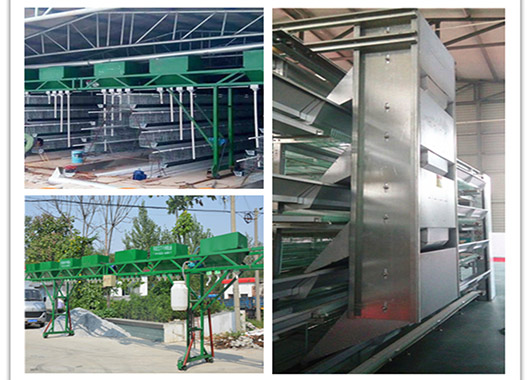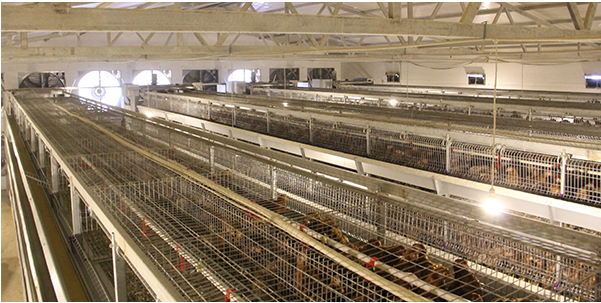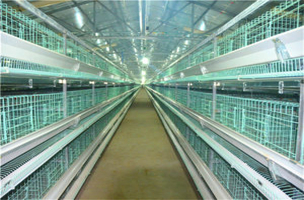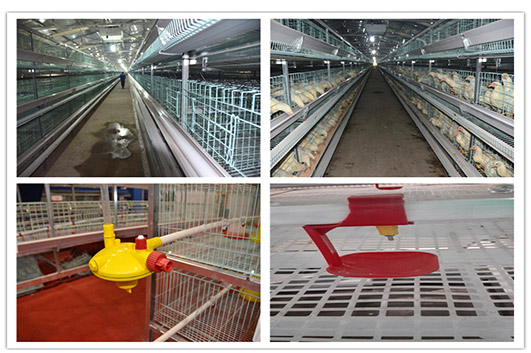How to manage layers in autumn and winter
- Published in Chicken cages
1. It is not easy to raise laying hens in autumn and winter for Chicken Breeding Equipment, and winter management is a very complicated project. Low temperature has an impact on the production and growth of chickens. First, pay attention to the insulation of the chicken house and close the doors and windows; block the holes and holes to keep the chicken house at a relatively stable temperature. The optimal temperature for chicken laying is 18 ℃ ~ 23 ℃, and the minimum temperature is not lower than 5 ℃, which can basically maintain normal production.
2. Increase feed energy concentration. At low temperatures, the heat energy of the laying hens is large. To maintain production stability, the energy and protein content can be increased in the feed. When the house temperature is lower than 10 ° C, 10% to 20% of corn is added to the feed to lay eggs For flocks with a rate of 90% or more, 1% to 1.5% of fat can be added to the feed, and the feeding amount can be increased by 10 to 15 grams per bird.When the temperature is lowered by 3 ° C to 5 ° C, the feeding amount of each animal is increased by 3 to 5 grams to maintain the stability of laying eggs.
3. Keep the house air fresh and dry. Under the premise of stressing insulation, more attention should be paid to ventilation. From a nutritional point of view, the first is air, the second is water, and the third is feed. The caged chickens have a high density and a large amount of ventilation. If you do not pay attention to ventilation, it is easy to have problems. Chickens living in the air for a long time are prone to respiratory diseases, which induce Newcastle Disease and other viral diseases. Therefore, the skylight must be open, and the windows and doors must be opened regularly for 20 to 30 minutes for ventilation.

4. Clean up feces in time and reduce ammonia pollution. The harmful gases in the chicken house are mainly ammonia, hydrogen sulfide, carbon dioxide, and carbon monoxide. The most harmful is ammonia, which is produced by feces. The ammonia content is high, it strongly stimulates the chicken's respiratory tract mucosa and eye conjunctiva, and damages the chicken's first protective barrier, making it easy for various viruses and bacteria to invade. There is no exhaust facility, and chickens that do not pay attention to ventilation The house is the most, so you have to measure the ammonia concentration in the chicken house. When you enter the house, the ammonia smell is not dazzling or pungent, and its concentration is basically 10 ~ 15ppm, keeping it within 20ppm. Generally safer.
5. Regularly disinfect the chicken. Low temperature is a relatively active condition for various viruses, and it is also a season where various viral diseases are prone to occur. Therefore, take the chickens to disinfect once a week, add an appropriate proportion of Wanda high polyiodine with warm water, leave 1 meter above the flock, downward Spray, purify air, disinfect and sterilize in layer chicken cages price in nigeria.
6. Regularly test chickens for immune antibodies. The peak period of laying hens is generally after 22 weeks of age, so various immunizations must be completed before 20 weeks of age. Once the peak period of egg production is reached, try to avoid immunization and avoid stress. If there are changes in the detection antibodies, corresponding measures must be taken to start with improving the chicken's autoimmune ability.
7. Eliminate sick and weak chickens in time. If the chickens have weak chickens with chronic respiratory diseases and intestinal diseases, they must be disposed of in time. These chickens are often the fuse that endangers the health of the chickens.





